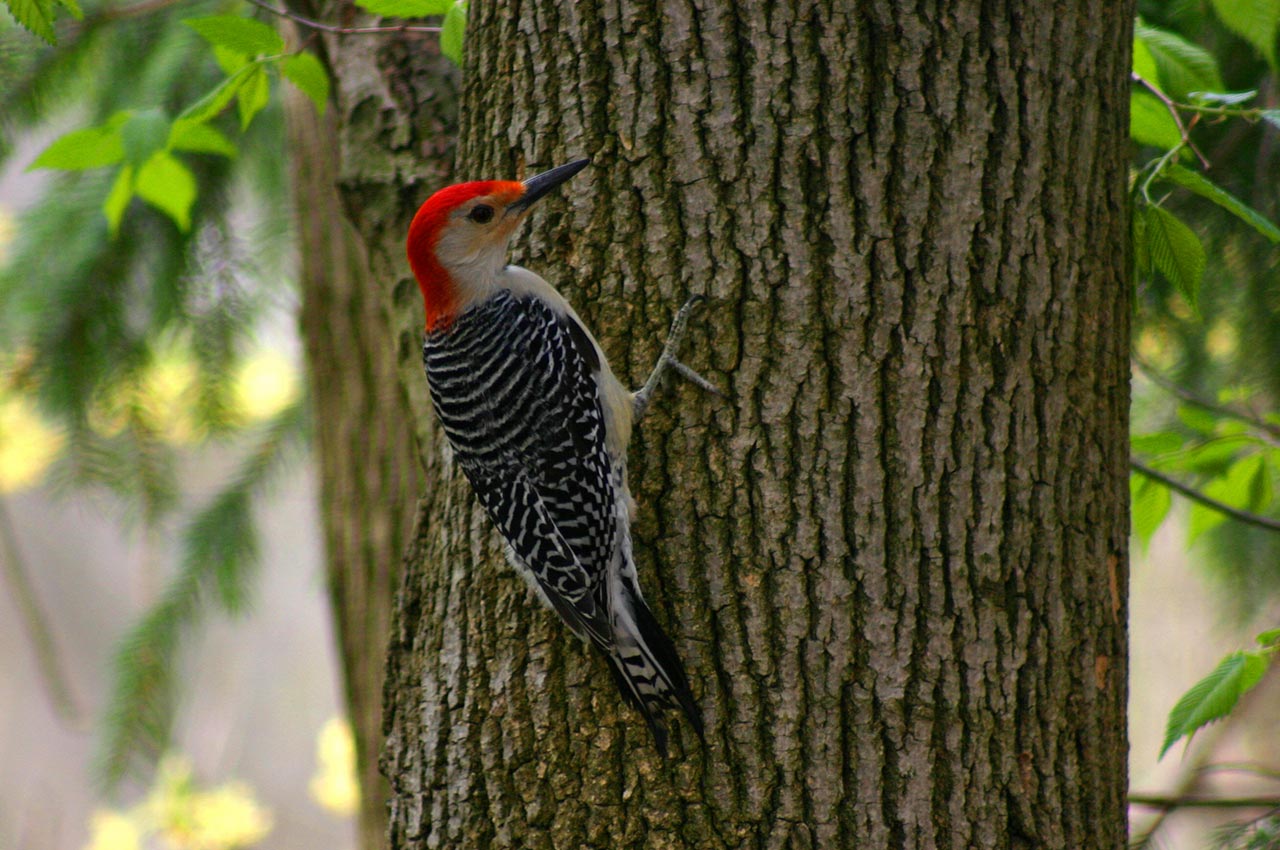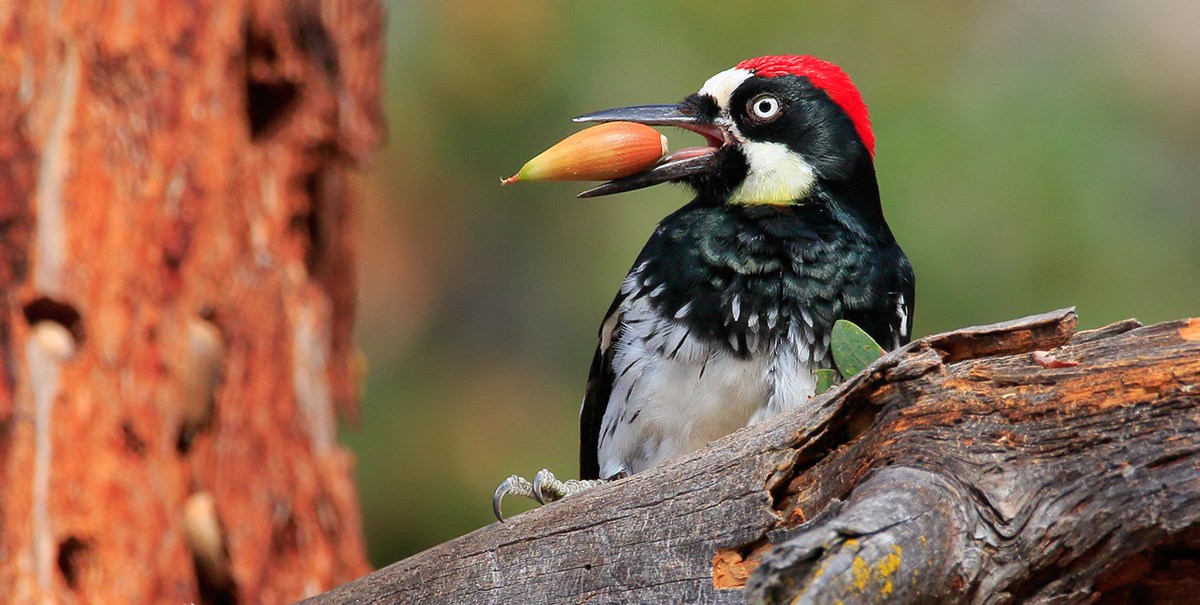Woodpeckers: A Comprehensive Overview to Understanding These Unique Birds
Woodpeckers, with their unique habits and physical characteristics, have long astounded the curiosity of ornithologists and nature enthusiasts alike. As we check out the complex anatomy, diverse types, and eco-friendly value of woodpeckers, a deeper recognition for these distinct birds and the mysteries they hold unfolds.

Woodpeckers' Drumming Actions
Woodpeckers exhibit a rhythmic and specific drumming behavior that serves numerous crucial features in their day-to-days live. This habits is mainly related to interaction, region protection, and foraging. The distinct drumming audio is produced by the fast pecking of their beaks versus difficult surfaces such as tree trunks, branches, and even metal objects.
Communication is an essential facet of woodpecker behavior, and drumming plays a significant function in this procedure. Woodpeckers use drumming to establish their visibility, draw in friends, and preserve contact with their partners and spawn. The regularity, intensity, and period of drumming sequences communicate details messages to other woodpeckers in the location.
Along with interaction, woodpeckers make use of drumming actions for region defense. Woodpeckers in Florida. The loud and recurring drumming acts as an advising to prospective trespassers, signifying that the location is currently asserted. By developing their area via drumming, woodpeckers lower the possibility of problems over useful resources such as food and nesting websites
Additionally, woodpeckers also use drumming as a foraging technique. The rhythmic pecking assists them locate insects hiding under the bark of trees by creating vibrations that disrupt the victim's cover-up. This habits showcases the flexibility and ingenuity of woodpeckers in utilizing their drumming skills for numerous important functions.
Special Adjustments for Tree Climbing
Having mastered the art of drumming to interact, safeguard area, and forage, woodpeckers have actually evolved one-of-a-kind adjustments that facilitate their exceptional climbing up abilities in their arboreal habitats. One crucial adjustment is their specific feet. Woodpeckers have zygodactyl feet, with 2 toes aiming forward and two toes directing backwards. This arrangement provides a strong hold on the vertical surfaces of trees, enabling them to cling effortlessly while foraging for bugs or drumming. Additionally, woodpeckers possess rigid tail plumes that work as a prop to support their bodies as they climb up. These tail plumes provide security and equilibrium, allowing woodpeckers to steer up tree trunks with accuracy and dexterity.
Furthermore, woodpeckers have effective neck muscles and an unique head structure that help in their climbing capabilities. Their strong neck muscles permit them to quickly peck at tree bark without experiencing whiplash, while their thick skull and little mind serve as shock absorbers, protecting them from the influence of repeated drumming. These adaptations collectively make it possible for woodpeckers to browse the vertical globe of trees with effectiveness and grace.

Function of Woodpeckers in Ecosystems
By foraging for bugs under the bark of trees, woodpeckers aid control bug populations, preventing episodes that could damage the total health and wellness of the woodland. Furthermore, woodpeckers create dental caries in trees that serve as essential nesting sites for a selection of various other bird species, promoting biodiversity within the community.
Moreover, the drumming and vocalizations of woodpeckers play a vital duty in interaction and territory establishment. These sounds not only offer to bring in companions however additionally help specify borders between various woodpecker territories, minimizing problems and advertising an unified coexistence within the woodland neighborhood. In general, the visibility of woodpeckers in woodland ecosystems highlights their relevance as keystone types, affecting the characteristics and working of these environments in complex methods.
Composition: Specialized Beaks and Feet
In the detailed web of woodland communities, the specialized beaks and feet of woodpeckers are vital adjustments that allow them to fulfill their crucial eco-friendly functions. Woodpeckers possess special anatomical functions that are particularly developed to aid them in their foraging and nesting actions.
One of the most unique function of woodpeckers is their solid, here are the findings chisel-shaped beaks. These beaks are flawlessly adapted for drilling right into wood to discover insects, larvae, and sap concealed below the bark of trees. The strong muscle mass and tough structure of their beaks enable woodpeckers to eat a price of approximately 20 times per secondly without creating damages to their skulls.
Additionally, woodpeckers have actually specialized feet that help in their acrobatic climbing up capabilities. Their feet have two toes directing ahead and 2 toes pointing backwards, providing a strong grasp on vertical surface areas (Woodpeckers in Florida). This special foot plan, along with tight tail feathers that work as a helpful prop, allows woodpeckers to stick to tree trunks and branches easily while they look for food or dig deep into nesting dental caries
Woodpecker Variety Variety
Woodpeckers are a diverse team of birds found throughout various ecosystems worldwide, with over 200 known species exhibiting adaptations to various atmospheres. Woodpeckers have actually progressed to occupy a variety of environments, from forests and forests to meadows and deserts, each providing distinct difficulties that have actually influenced the advancement of distinctive woodpecker types.
These adjustments allow woodpeckers to forage efficiently in their respective habitats, reducing competitors amongst types and advertising particular niche differentiation. Additionally, geographical isolation and historical variables have actually played a function in forming the image source circulation and diversity of woodpecker species, leading to the vast selection of specialized adaptations seen in these interesting birds.

Final Thought
In conclusion, woodpeckers are fascinating birds that display distinct drumming behavior, specialized adaptations for tree climbing, and play important functions in environments. With a varied array of woodpecker types discovered worldwide, these birds are hop over to these guys essential for maintaining the health and wellness and equilibrium of woodlands and forests.